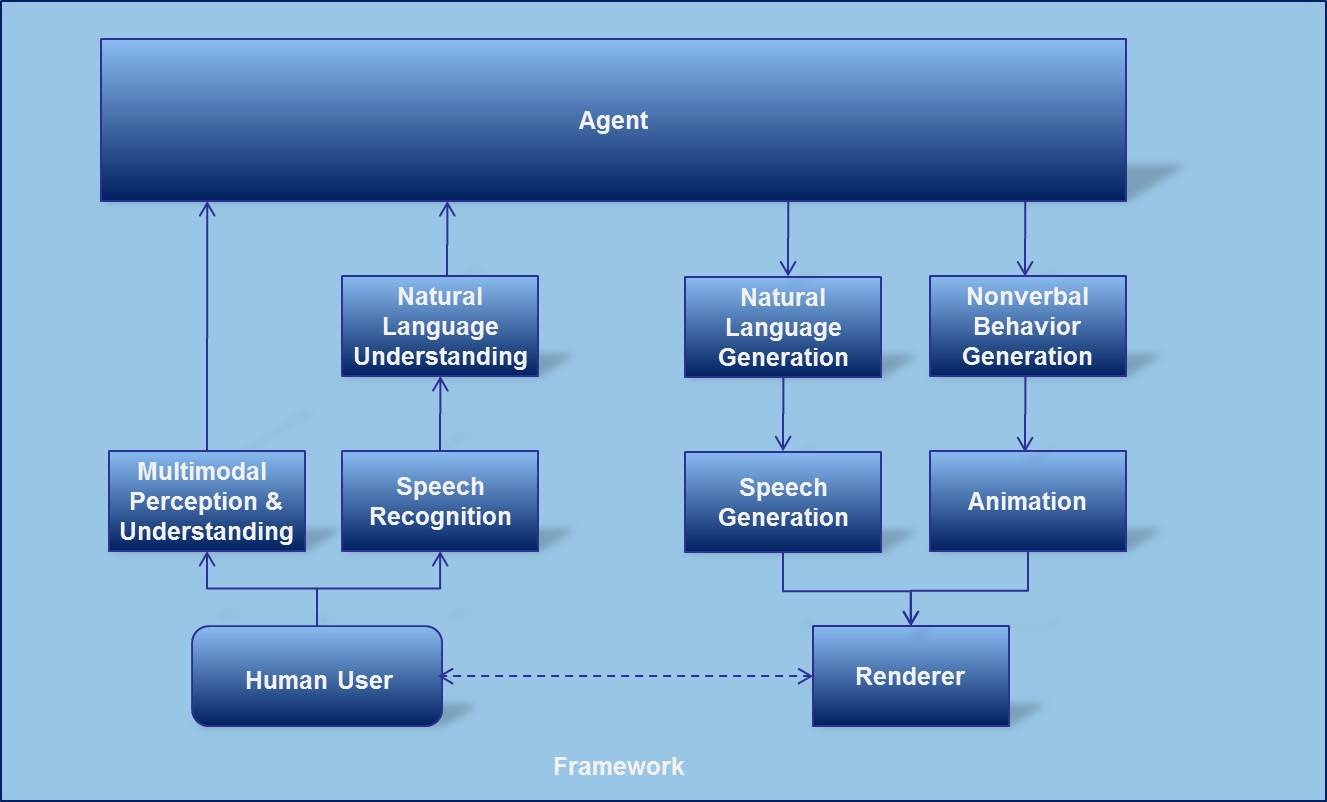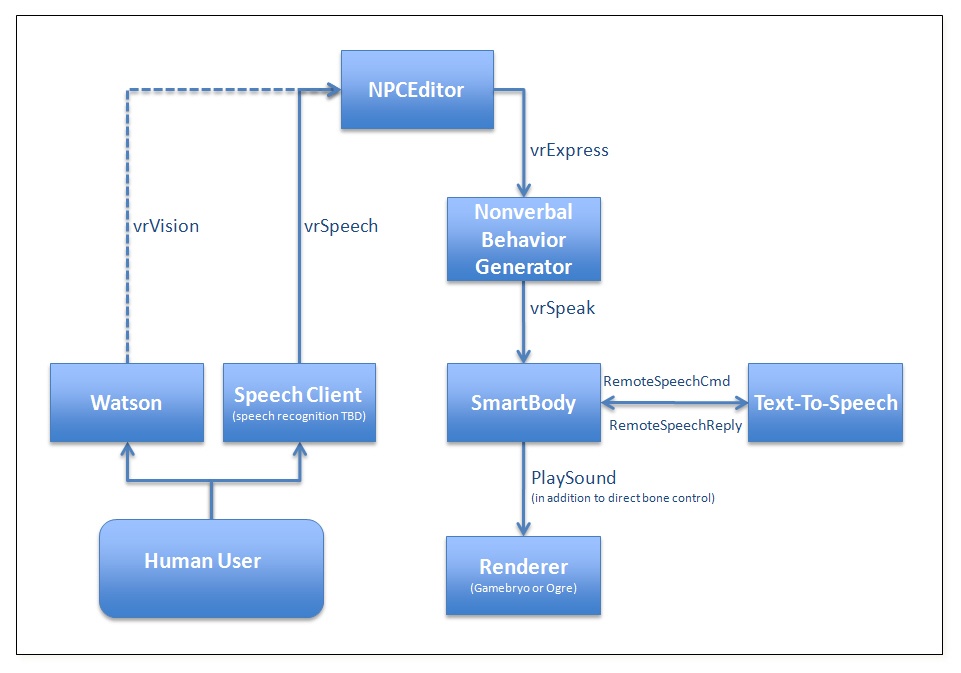Virtual Human Architecture
The Virtual Human Toolkit is based on the ICT Virtual Human Architecture. This architecture defines at an abstract level what modules are needed to realize a virtual human, and how these modules interact. The basic functionality of each module as well as its interface is well-defined, but its actual implementation falls outside the scope of the architecture. The architecture dictates the implementation of a distributed system where communication is mostly realized using message passing. This allows for multiple implementations of a certain module and simple substitution of one implementation for another during runtime. It also allows for distributed systems, where different modules run on separate computers.
ICT has developed a general framework, consisting of libraries, tools and methods that serve to support relatively rapid development of new modules. Using this framework, ICT and its partners have developed a variety of modules, both in the context of basic research as well as more applied projects. The Toolkit provides some of the modules that have been transitioned from this research.
Please see below for a high level Virtual Human Architecture.
Figure 1. The ICT Virtual Human Architecture.
Virtual Human Toolkit Implementation
The Virtual Human Toolkit is a set of components (modules, tools and libraries) that implements one possible version of the Virtual Human Architecture. It has the following main modules:
- Speech Recognition: PocketSphinx server plus AcquireSpeech client
- Multi-modal Perception & Understanding: MultiSense
- Agent/Natural Language Generation: NPCEditor
- Nonverbal Behavior Generation: Nonverbal Behavior Generator (NVBG)
- Animation System: SmartBody
- Renderer: Unity 3D or Ogre
- Speech Generation: Text To Speech Interface
For a complete overview of all the modules, tools and libraries, please see the Components section.
The figure below shows how all modules interact along with the messages used to communicate with each other.
Figure 2. The Virtual Human Toolkit architecture.

